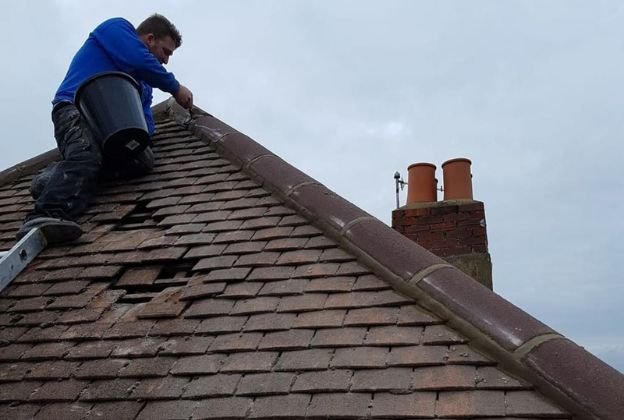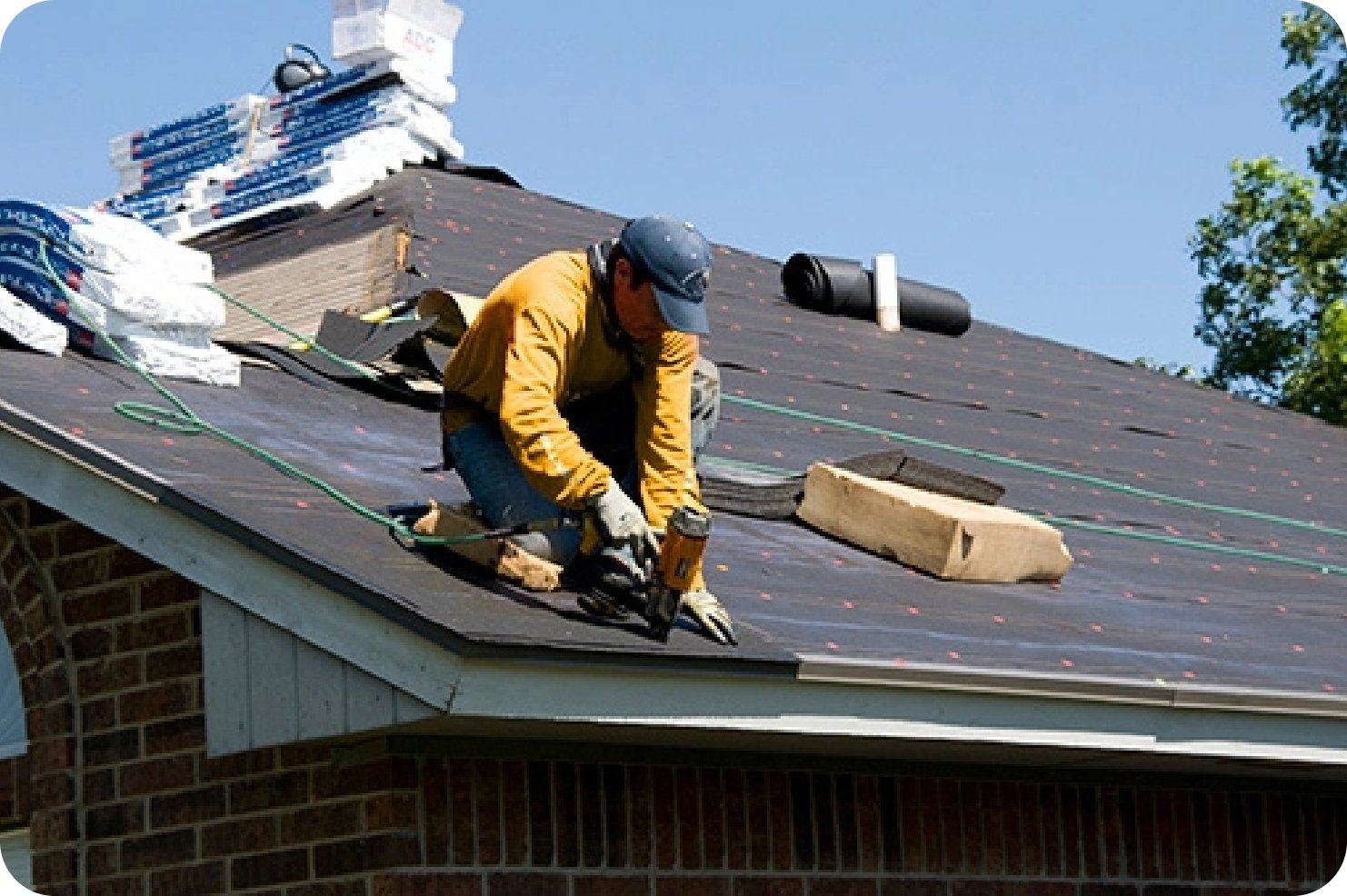Oahu Roofing: Comprehensive Roofing Services in the Oahu Location
Oahu Roofing: Comprehensive Roofing Services in the Oahu Location
Blog Article
Understanding the Different Kinds Of Roof Coverings: A Comprehensive Overview for Homeowners
In the world of homeownership, selecting the proper roofing style is a decision that carries significant implications for both performance and visual appeal. With an array of options-- ranging from the traditional gable to the contemporary level-- each type presents one-of-a-kind benefits and obstacles that need to line up with the property owner's certain needs and ecological factors to consider. Comprehending these distinctions not just aids in making an enlightened option but additionally affects lasting maintenance and energy efficiency. As we explore the intricacies of numerous roof covering kinds, it comes to be evident that a person size does not fit all; the appropriate option may surprise you.
Saddleback Roof
Saddleback roofs, defined by their triangular shape, are among the most prominent roofing styles due to their simpleness and performance in shedding water and snow. This design features two sloping sides that meet at a ridge, permitting for effective drainage and lessening the threat of water buildup. The high pitch generally related to gable roofings boosts their capability to manage heavy precipitation, making them ideal for numerous environments.
In addition to their functional advantages, saddleback roofs offer aesthetic versatility. They can be adapted to various building styles, from standard to modern homes. The design can additionally suit added features such as dormer windows, which improve all-natural light and ventilation in the attic room area.
Additionally, gable roofing systems give adequate area for insulation, adding to energy performance. Home owners can pick from a selection of roofing products, consisting of asphalt tiles, metal, and floor tiles, even more enhancing personalization options.
Despite their advantages, gable roofing systems might call for extra support in areas prone to high winds or hefty snowfall. Generally, the saddleback roof remains a favored selection because of its blend of functionality, sturdiness, and aesthetic appeal.
Apartment Roofs
Flat roofing systems are often acknowledged for their minimalist style and practical applications, especially in commercial and industrial setups (oahu roofing). These roof coverings include a straight or nearly straight surface area, which enables easy building and construction and flexible room use. While they may lack the aesthetic allure of pitched roofing systems, level roofing systems supply numerous benefits, especially in city environments where making the most of area is essential
Among the key benefits of flat roofs is their accessibility. Property owners can use the roofing room for different purposes, such as roof gardens, balconies, or photovoltaic panel setups. Additionally, level roof coverings are usually extra cost-efficient to maintain and mount contrasted to their sloped equivalents, as they require fewer materials and labor.
However, level roofing systems do present certain challenges. Proper water drainage is necessary to protect against water merging, which can cause leakages and structural damages. Hence, selecting high-grade waterproofing materials and routine assessments are vital for guaranteeing durability. Common materials used for level roofs include built-up roof (BUR), customized asphalt, and single-ply membranes, each offering distinctive advantages. Overall, level roof coverings act as a adaptable and useful option for lots of house owners and businesses alike.
Hip Roofing Systems
Hip roofings are identified by their sloped sides that converge on top, forming a ridge. This style stands out from gable roofings, as all four sides of a hip roof covering incline downwards toward the wall surfaces, giving an extra stable structure. The angle of the inclines can vary, permitting convenience in building visual appeals and performance.
Among the key benefits of hip roofings is their ability to hold up against heavy winds and unfavorable climate condition. The sloped surface areas allow better water drainage, reducing the danger of leakages and water damages. In addition, hip roofing systems provide boosted attic room, which can be made use of for storage or also exchanged livable areas.
Nevertheless, creating a hip roofing can be more pricey and complex than easier roof covering kinds, such as gable roofing systems. The extra product and labor associated with creating the slopes and making sure appropriate structural honesty can result in higher costs. Despite these downsides, several home owners favor hip roofings for their durability, aesthetic appeal, and potential for energy effectiveness.
Mansard Roofings
Mansard roofings, usually recognized by their unique four-sided design, feature two slopes on each side, with the lower incline being steeper than the upper. This architectural style, originating from France in the 17th century, is not only aesthetically appealing but functional, as it takes full advantage of the usable area in the top floors of a building. The high reduced incline enables more headroom, making it a perfect choice for attics or loft spaces, which can be transformed into living spaces.
Mansard roofs are identified by their versatility, fitting various building designs, from conventional to contemporary. They can be built with various materials, consisting of asphalt tiles, slate, or steel, offering house owners with an array of options to suit their preferences and budget plans. Furthermore, the layout permits the integration of dormer windows, enhancing all-natural light and air flow in the top degrees.
Nevertheless, it is vital to consider the prospective downsides. Mansard roofing systems might require more upkeep as a result of the intricacy of their layout, and their high slopes can be challenging for snow and rainfall drainage. Overall, mansard roof coverings combine elegance with practicality, making them a preferred choice among home owners looking for distinctive architectural features.
Lost Roofs
As homeowners significantly seek simplicity and capability in their building styles, shed roofing systems have arised as a popular option. Identified by a solitary sloping airplane, a shed roofing offers a minimal visual that enhances different home styles, from modern to rustic.
One of the key benefits of a shed roof covering is its straightforward construction, which Related Site often translates to reduce labor and material costs. This style enables for reliable water drain, lowering the risk of leaks and water damages. Furthermore, the vertical slope gives enough room for skylights, improving natural light within the interior.
Lost roofs additionally provide convenience in regards to usage. They can be successfully incorporated into enhancements, garages, or exterior structures like pavilions and sheds. In addition, this roof covering style can fit different roof materials, including steel, asphalt roof shingles, a knockout post or perhaps eco-friendly roof coverings, lining up with eco-friendly efforts.
Nevertheless, it is necessary to take into consideration regional environment conditions, as hefty snow lots might demand modifications to the roofing's angle or framework. In general, shed roofing systems provide a useful and cosmetically pleasing alternative for homeowners aiming to maximize functionality without compromising design.
Final Thought


Gable roofs, identified by their triangular form, are among the most prominent roofing styles due to their simpleness and efficiency in dropping water and snow. oahu roofing. The steep pitch commonly associated with gable roofings improves their capability to take care of heavy precipitation, making them ideal for various climates
While they may lack the aesthetic appeal of pitched roof coverings, level roofings offer countless advantages, particularly in metropolitan atmospheres where making the most of space is important.

Report this page